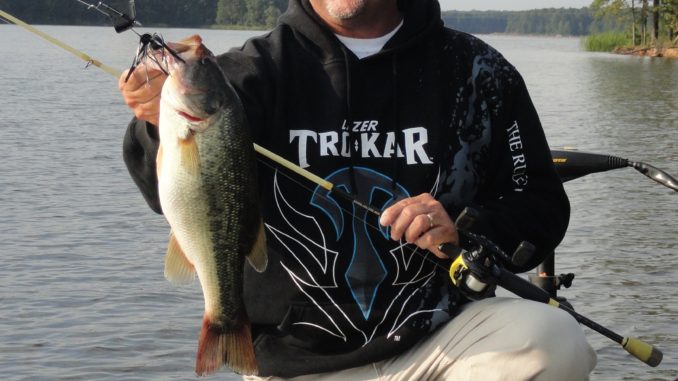
With Shearon Harris Lake’s popularity among bass fishermen and its proximity to the heavily populated Raleigh-Durham area, fishing pressure could have hurt its reputation for producing trophy bass.
But in the 1980s the N.C. Wildlife Resources Commission changed regulations governing bass-fishing on Harris, setting up a 16- to 20-inch slot limit and a 5-fish daily creel limit. No fish between 16 and 20 inches could be creeled; in addition, two fish less than 14 inches long could be kept each day.
Harris had already been considered one of North Carolina’s best lakes for trophy bass, and the change in regulations cemented that position.
The Commission’s introduction of threadfin shad and a decision by then-owner/operator Carolina Power & Light (later Progress Energy and now Duke Energy) to change the way it cleaned its cooling tower — recycling heavily-phosphated water into the lake — gave hydrilla and other water plants extra nutrition and keyed a growth spurt.
The grass meant sanctuaries for baitfish and more chances for bass to find something to eat. As a result, Harris largemouths began a legendary growth spurt, and the lake became the lunker haven that exists today.





Be the first to comment